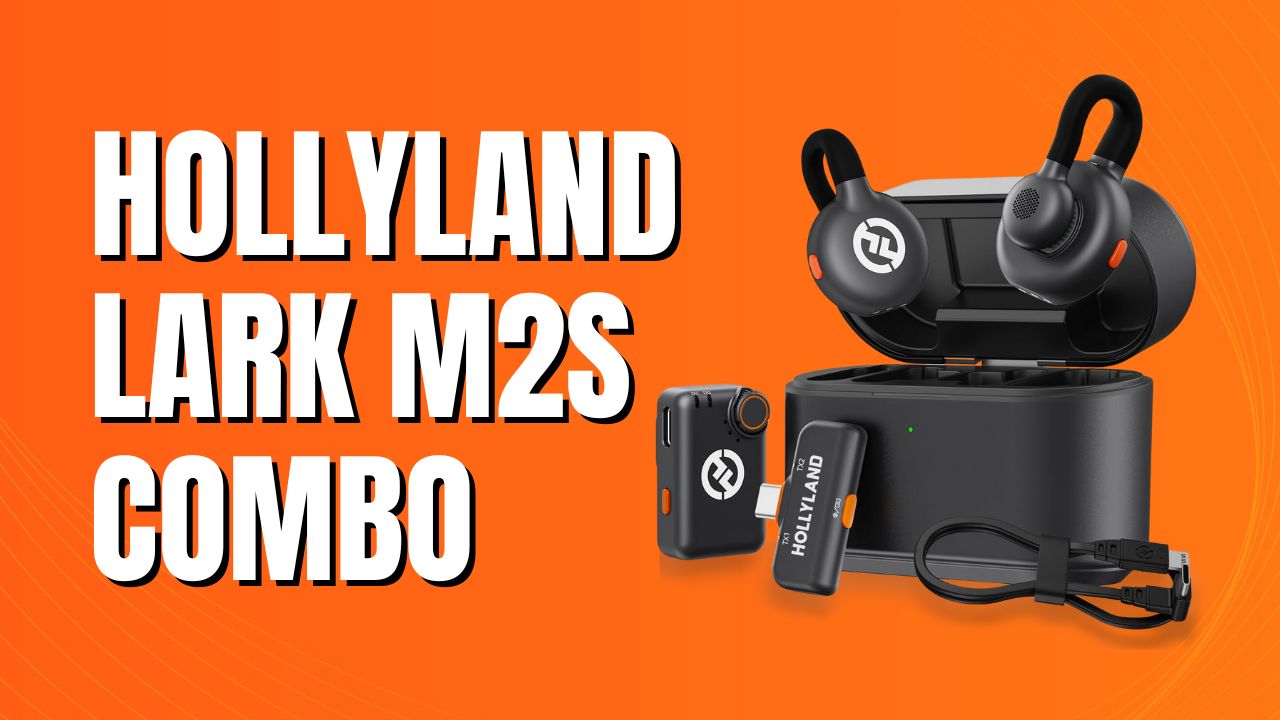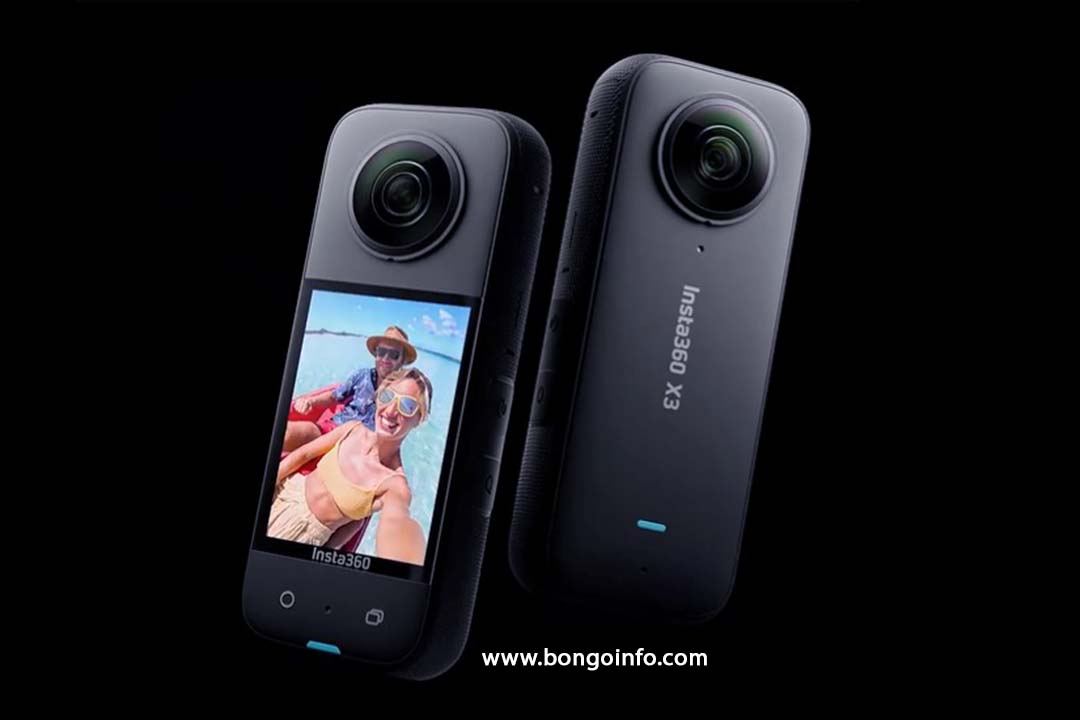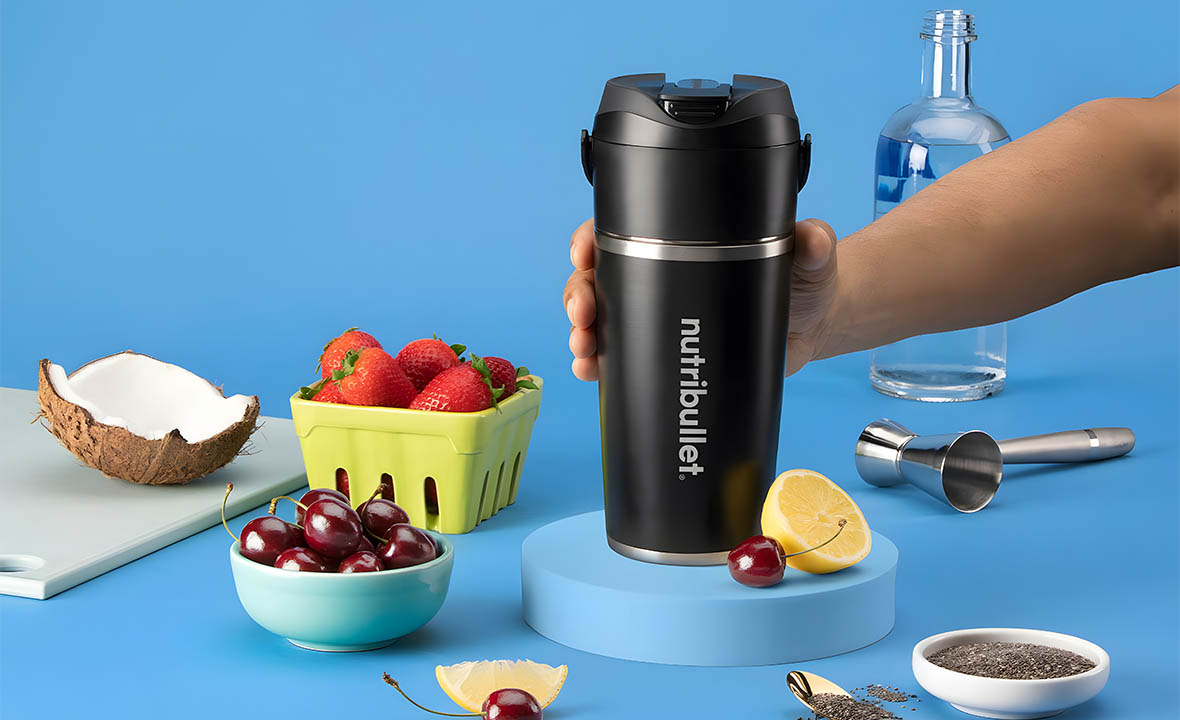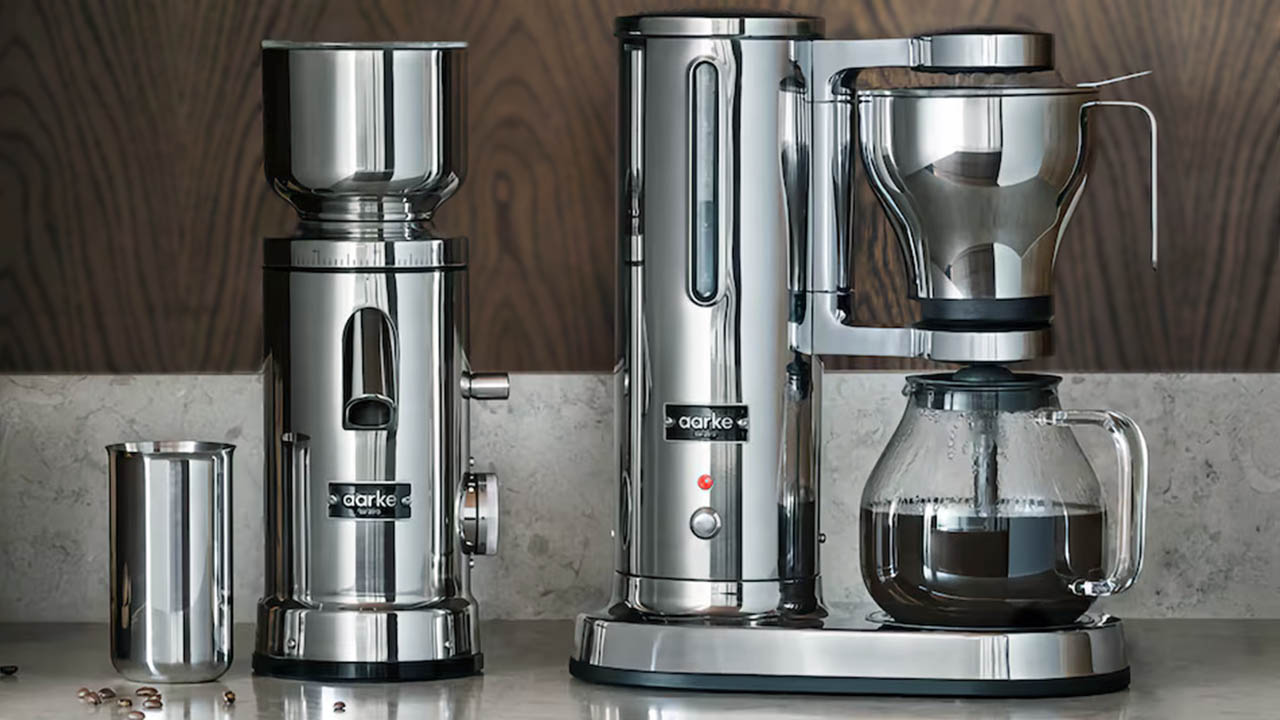DJI Avata 2 Review – Best FPV Flight Drone for Beginners
Venturing into the exhilarating realm of FPV (first-person view) drone flight unveils a captivating journey that has swept the globe with fervor. Originating over 15 years ago in the clandestine corridors of underground hobbyism, FPV demanded the ingenuity and unwavering resolve of pilots who scoured for parts, meticulously crafted, and tirelessly rehabilitated their drone creations. Fast forward to the present epoch, and this once clandestine passion has morphed into a ubiquitous pursuit, attainable by a burgeoning multitude – a metamorphosis largely attributed to the trailblazing endeavors of industry titan DJI.
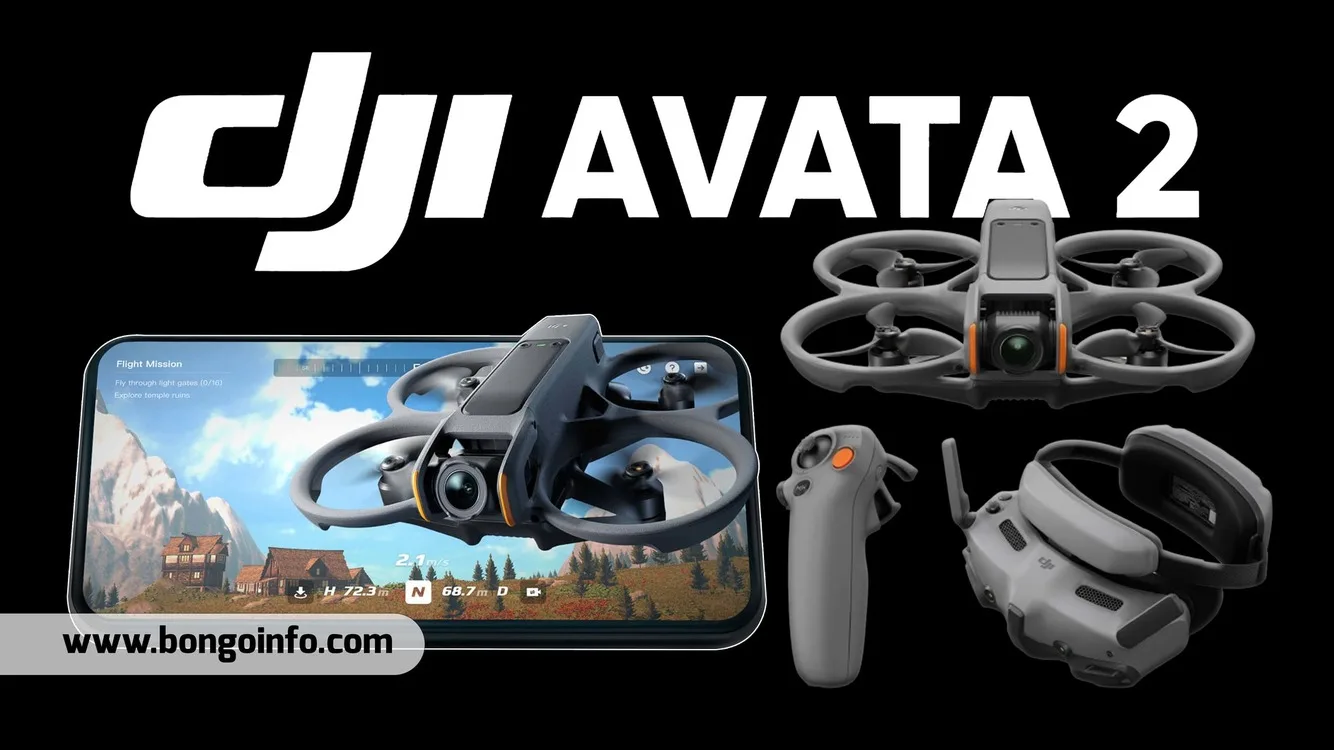
DJI’s genius lies in offering a paradigm shift for FPV enthusiasts: a solution that bypasses the arduous learning curve and eliminates the meticulous construction and repair inherent in traditional, self-built drones. With the Avata 2, they’ve democratized the skies, offering a “rip-roaring-ready-to-roll” experience nestled within a sleek, pre-assembled package.
The Avata 2 caters to a spectrum of piloting prowess. Nervous newbies can take to the skies with the confidence of an astronaut on a joyride. Normal mode, coupled with DJI’s intuitive Motion Controller 3 and a suite of guardian angels (think automatic takeoff, obstacle avoidance, and a failsafe return-to-home function), ensures stress-free, exhilarating flights. This opens the door for anyone, novice or veteran, to experience the intoxicating rush of first-person flight, all while capturing stunning photos or, more importantly in the FPV realm, awe-inspiring, adrenaline-pumping videos.
For the pilot yearning to push their limits, Sport mode beckons. Here, the Avata 2 transforms into a more responsive beast, unleashing its potential for increased speed and tighter control. Finally, for the seasoned veterans, the ultimate test awaits: manual flight mode. Here, DJI sheds its training wheels, leaving you in complete command – but be warned, this path is fraught with peril. Without diligent practice hours logged in a trusty simulator, a rendezvous with the unforgiving ground (the Avata 2, alas, isn’t designed for a kamikaze flight style) is a near certainty.
Transitioning to Sport mode can enhance your confidence, granting access to heightened speeds and precise control over your aerial maneuvers. However, should you dare to venture further into the realm of adrenaline-fueled flight, consider disengaging all flight-assistance mechanisms. Embrace the raw challenge of full manual control, facilitated by the advanced DJI Remote Controller 3. But, heed this warning: this daring feat is not for the faint-hearted. Without prior hours of meticulous practice in the simulated skies, you’re inevitably destined for a catastrophic rendezvous with the unforgiving ground below. The consequences? A lamentable fate awaits your cherished Avata 2, ill-equipped to endure the onslaught of multiple, forceful collisions. Proceed with caution, for the stakes are high, and the margin for error, unforgiving.
Digi Avatar 2: Release Date & Price
The DJI Avata 2 marks DJI’s third venture into FPV drones. Unveiled on April 11, 2024, it is immediately purchasable from the DJI website. Succeeding the Avata released in August 2022 and the DJI FPV from March 2021, the Avata 2 is offered in a Fly More Combo, priced at $999 / £879 / $1,499 with one battery or $1,199 / £1,049 / AU$1,839 with three batteries. This combo includes the drone, the new DJI Goggles 3, and the DJI Motion Controller 3, neatly packed in a provided black bag.
For those preferring a gaming-style controller, the DJI Remote Controller 3 is available separately for $199 / £139 / AU$229. Similar in design to its predecessor, the DJI Remote Controller 2, the new version houses the antenna internally, eliminating the need for folding.
The DJI Avata 2 Fly More Combo offers a reasonable price considering its inclusions, particularly the Goggles 3, which, combined with the O4 camera and transmission, delivers superior image quality with improved dynamic range compared to previous models. Shadows exhibit more detail and are better balanced with highlights. Additionally, Fly More combos include one or three extra batteries, a carry bag, a charging hub, and other useful accessories, providing value especially for users anticipating the need for additional batteries.
Today’s Best DJI Avata 2 Deals
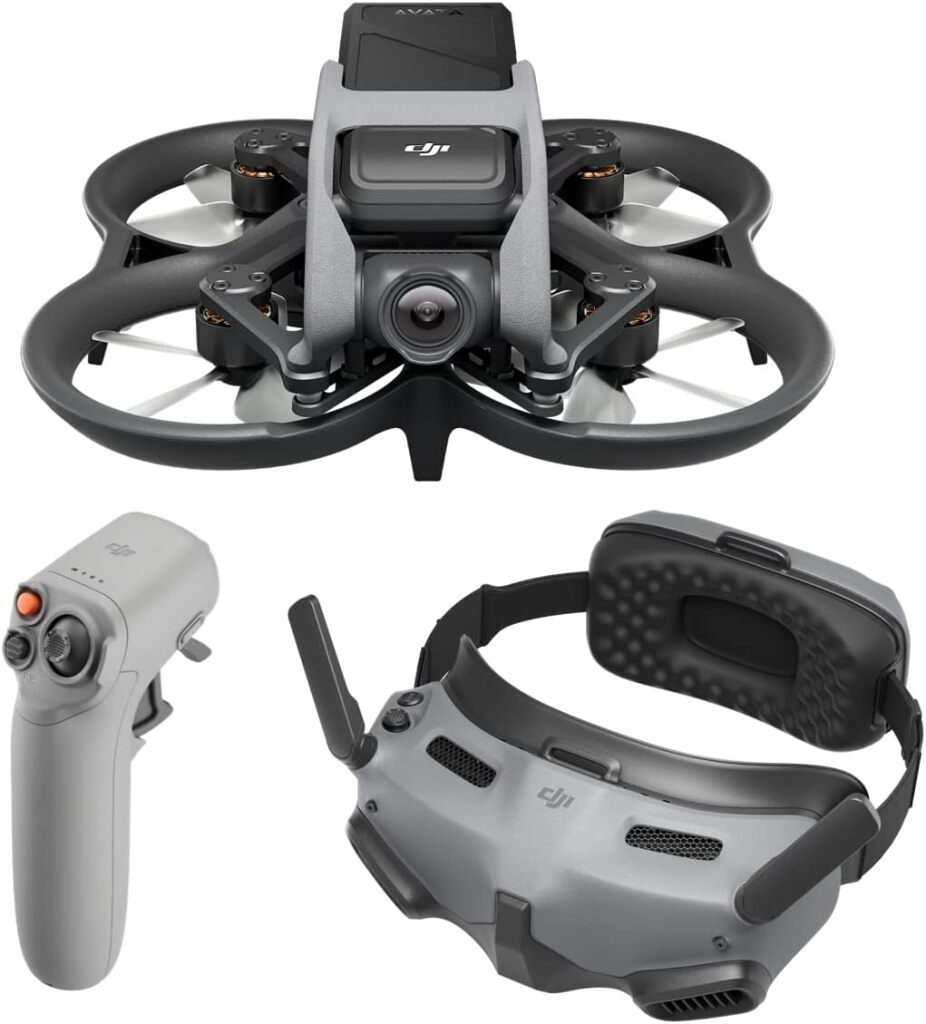

$829
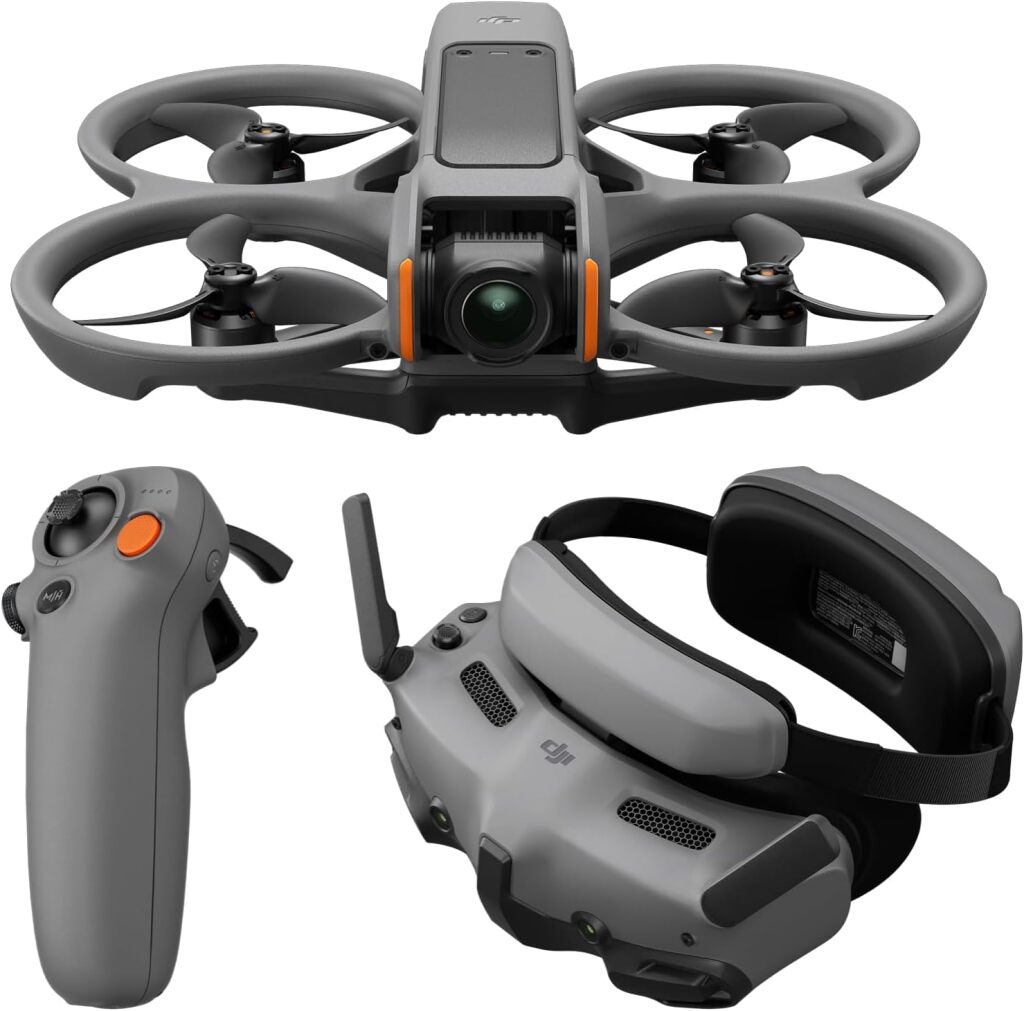

$1199
DJI AVATA 2: Design and Controller
The DJI Avata 2 undergoes a significant overhaul compared to its previous model, featuring an elongated wheelbase and measuring 7.26 x 8.35 x 2.52 inches / 184.5 x 212 x 64mm, with a sleeker frame to enhance its aerodynamics. DJI asserts that the Avata 2 boasts enhanced durability and power compared to its predecessor while also shedding 1.06oz / 30g in weight. Despite its lightweight nature, its resilience against crashes is yet to be fully tested, although the inclusion of built-in obstacle detection and avoidance systems can largely mitigate such incidents. Notably, the Avata 2 maintains its identity as a cinewhoop with ducts rather than transitioning into a freestyle FPV drone.
In the UK, flying the Avata 2 with HD goggles is permissible if accompanied by a spotter maintaining visual line of sight. Further details regarding the regulations governing FPV drone flights can be found in our comprehensive guide or by referencing the relevant aviation authority websites such as the CAA in the UK, FAA in the US, and CASA in Australia.
Equipped with a 2150mAh battery, the Avata 2 offers a flight time of up to 26 minutes under ideal conditions, though engaging in manual maneuvers on windy days will inevitably reduce this duration. However, its endurance remains commendable, particularly advantageous for commercial users who can focus on their tasks without constant concerns about battery depletion.
Two controller options are available: the DJI Motion Controller 3, bundled with the Fly More Combo, and the separate DJI Remote Controller 3 tailored for gamers. The Motion Controller 3 offers an intuitive flying experience suitable for beginners, while the Remote Controller 3 provides more nuanced control favored by experienced pilots. Additionally, the Motion Controller 3 introduces ‘Easy Acro’ functionality, simplifying aerobatics for novice users.
However, the controllers present certain limitations. The Motion Controller 3 lacks accommodation for left-handed users, and the Remote Controller 3’s ergonomics may prove cumbersome for manual flying techniques, particularly for those accustomed to pinching the gimbals during flight.
DJI AVATA 2: Features and Flight
The DJI Avata 2, a successor to its namesake, democratizes the exhilarating realm of FPV flight, inviting novices and seasoned pilots alike to partake in this once highly technical pastime. Gone are the days of convoluted setup routines; with the Avata 2, a swift configuration unlocks a gateway to a world experienced entirely through the immersive lens of the DJI Goggles 3.
But what truly compels one to upgrade from the original Avata? Firstly, a complete overhaul in design yields a noticeably quieter drone. While not achieving complete sonic stealth, the Avata 2 produces a significantly less conspicuous hum compared to its predecessor’s notorious “screaming” tendencies. This transformation is accompanied by a lengthened wheelbase and a more aerodynamic, flatter profile, culminating in enhanced flight performance.
The most compelling reason to choose the Avata 2 lies in its monumental leap in video quality. Prior iterations, including the original Avata and the DJI FPV, were plagued by footage lacking in dynamic range, resulting in murky shadow areas devoid of detail. The O4 ultra-low latency video transmission system represents a quantum leap, not only for the captured footage but also for the visuals displayed within the new DJI Goggles 3. The crispness of the imagery is genuinely impressive, and its contribution extends far beyond aesthetics; it actively bolsters obstacle avoidance, particularly when navigating intricate networks of thin branches and power lines.
The DJI Avata 2 boasts three distinct flight modes, conveniently selectable via either the DJI Motion Controller 3 or the DJI Remote Controller 3: Normal, Sport, and full Manual (available exclusively with the DJI Remote Controller 3).
Normal mode, activated through the DJI Motion Controller 3, prioritizes safety and ease of flight. It facilitates maneuvers with exceptional precision and even allows for a reversal function, a rarity in the FPV domain. This mode is ideally suited for beginners; even individuals entirely new to drone operation can achieve immediate flight proficiency with minimal guidance. It serves as the optimal choice for navigating enclosed spaces or executing maneuvers in tight quarters.
For those seeking a more exhilarating FPV experience, Sport mode beckons. It unlocks higher ascent and descent rates, propels the drone forward at blistering speeds, and dispenses with obstacle avoidance, placing the pilot in a state of exhilarating immersion.
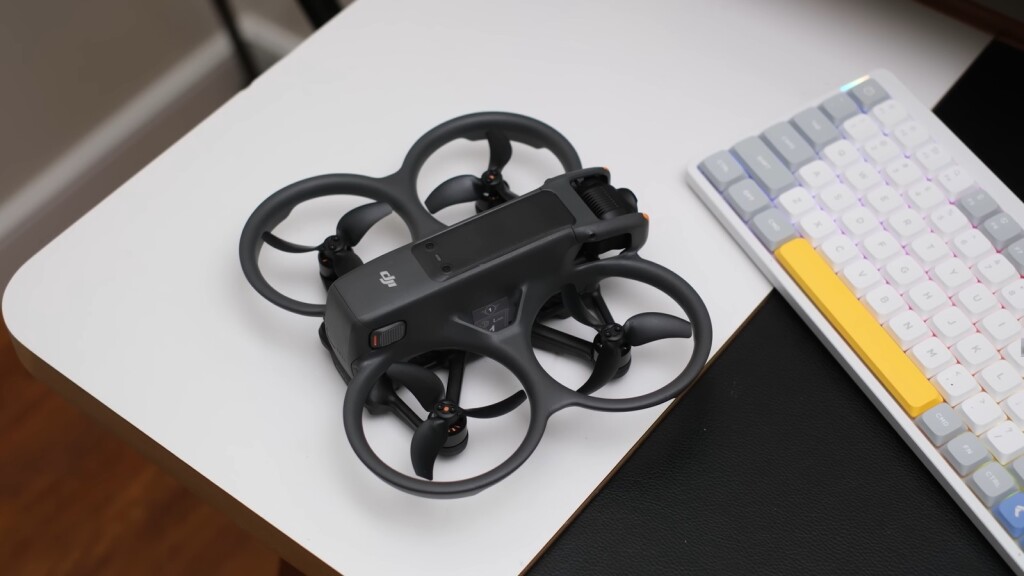
As its name implies, full manual mode, exclusive to the separately sold DJI Remote Controller 3, caters exclusively to seasoned FPV pilots. It relinquishes all flight assistance and stabilization, placing the pilot at the helm, free to execute maneuvers with the finesse of an avian acrobat. Aspiring pilots unfamiliar with this mode are strongly advised to invest time in honing their skills through a dedicated FPV flight simulator, as their maiden voyage will undoubtedly culminate in a spectacular, albeit unintended, descent – likely at the very outset.
The video showcased within this article was captured entirely in full manual mode, within a single, unedited flight, expressly to convey the unbridled potential of the Avata 2. From heart-stopping accelerations to gravity-defying decelerations, soaring to lofty heights and skimming the earth at breakneck speed, navigating narrow gaps with surgical precision, and executing breathtaking loops and flips – the Avata 2 renders it all possible. While not specifically designed for freestyle acrobatics, it undeniably entertains to witness the extent to which it can be pushed.
My experiences in the realm of FPV drones have instilled in me an appreciation for the art of compromise, urging me to meticulously consider my aspirations and select the drone that aligns most congruently with them. The process is akin to selecting a car; one individual might prioritize a model renowned for its safety, reliability, and sturdiness, whereas another might crave the unbridled thrill of velocity.
The inaugural DJI FPV, released in 2021, served as the catalyst that ignited my passion for FPV flight. I remain grateful to DJI for introducing this pioneering model, granting complete novices the opportunity to explore the world of FPV and ascertain if it resonated with their inner daredevil. However, upon mastering flight in full manual mode, I swiftly gravitated towards the robustness of a traditional, DIY FPV constructed with a carbon fiber frame. My penchant for freestyle acrobatics, maneuvers that inevitably culminate in crashes, some quite spectacular, necessitated a more resilient platform. Over the past year, I must have endured at least 200 crashes with my custom quadcopter, sustaining minimal damage on each occasion. Moreover, I am convinced that such drones deliver superior flight dynamics.
Having transitioned from custom-built quadcopters to DJI’s FPV offerings, I must confess to experiencing a dip in piloting gratification. DJI’s drones, in my estimation, underperform in terms of flight characteristics, and their susceptibility to damage upon even minor collisions is a significant drawback. In fact, piloting the Avata 2 in full manual mode yielded a persistent sensation of battling the drone. It felt inadequately tuned, and compared to the responsiveness of my everyday carbon fiber FPV machine, the Avata 2’s flight instilled a sense of unwelcome stress.
But as I’ve emphasized, FPV is a realm of compromises. My customized quadcopter lacks GPS guidance, obstacle avoidance sensors, and the luxury of extended flight times. It certainly doesn’t boast a convenient “panic button” that instantly decelerates the drone to a hover in moments of panic or overwhelming situations.
The beauty of the FPV world lies in its diversity, catering to a spectrum of aspirations and skill sets. While I relish the constant tinkering, the meticulous repairs, and the act of meticulously soldering components onto my FPV quad – activities that undeniably border on the headache-inducing – this isn’t everyone’s cup of tea, nor do they possess the requisite time for such endeavors. Herein lies the crux of DJI’s solution.
The Avata 2, while not necessarily intended for the vanguard of FPV pilots, shines for those who prioritize the safety net provided by GPS and return-to-home functionality, the peace of mind offered by object avoidance sensors, and the ever-reliable “panic button.” It boasts impressive flight times, empowering you to embark on expansive explorations and lose yourself more profoundly in the immersive experience, further amplified by the marriage of the stunning O4 video transmission system and the Goggles 3.
Did I forget to mention the price tag? It’s undeniably attractive, considering it encompasses everything required for immediate flight – the drone itself, the goggles, and the remote controller, all representing the cutting edge of drone technology.
The DJI Avata 2 carves a compelling niche, offering a harmonious blend of accessibility, safety features, and exhilarating flight potential. Whether you’re a burgeoning FPV pilot yearning to take flight for the first time, or a seasoned operator seeking a respite from the constant maintenance and inherent fragility of a custom-built machine, the Avata 2 merits serious consideration. It’s a testament to DJI’s unwavering commitment to innovation and their dedication to expanding the boundaries of what’s possible within the exhilarating realm of FPV flight.
DJI AVATA 2: Image and Video Quality
The quest for unparalleled video quality in the FPV realm reaches a new zenith with the DJI Avata 2. Transcending the limitations of GoPros and external cameras, this marvel delivers a visual experience that flirts with the boundaries of cinematic excellence.
Now, a caveat for videography purists: my evaluation wasn’t accompanied by ND filters, those crucial tools for achieving silky smooth footage with that perfect touch of motion blur, especially under the harsh glare of a sunny day. Yet, even in their absence, the footage remains breathtaking. The dynamic range is nothing short of phenomenal, striking a perfect equilibrium between the inky depths of shadows and the brilliance of sun-drenched skies.
One of the hallmarks of DJI’s reign over the FPV domain has been the ingenious tilt function integrated into their drones. The Avata 2 proudly carries this torch forward, boasting a tilt range of -95 to 90 degrees. This seemingly simple feature empowers the user with unparalleled control over their perspective, allowing them to peer down at the ground rushing by in a dizzying blur or cast their gaze upwards towards the boundless expanse of the sky, with limitless options in between.
Delving deeper into the technical specifications, the Avata 2 unveils a 1/1.3-inch image sensor, wielding a mighty 12 megapixels of effective pixels. Partnered with a fixed aperture of f/2.8, this formidable duo captures light with remarkable efficiency. The field of view is equally impressive, offering a staggering 155 degrees, supporting a versatile array of modes – standard, wide-angle, and even a super-wide option to truly encompass the world in a single frame. While the Avata 2 can hold its own in the realm of photography, its true calling lies in the art of motion. Photographers seeking unparalleled image capture might be better suited reaching for one of DJI’s camera-centric drones.
Where the Avata 2 truly soars is in the domain of video. It effortlessly captures footage in resolutions ranging from a crisp 4K at 60 frames per second all the way down to a buttery smooth 1080p at a staggering 120 frames per second. All this visual indulgence is delivered at a bitrate of up to 130Mbps, ensuring that every detail is preserved with meticulous fidelity. For those seeking immediate gratification, the standard mode offers fantastic results straight out of the camera. But for the color-grading aficionados, the D-Log M mode awaits, brimming with potential. This mode unlocks a treasure trove of detail, empowering editors to wield their creative magic and imbue the footage with their own unique stylistic flourishes. The final look of your video becomes a canvas upon which you, the artist, can paint your vision.
DJI Avata 2 Video Sample
The inclusion of Goggles 3 in the Fly More Kit presents an intriguing blend of excellence and oversight. On the surface, they excel—snug fit, minimal light intrusion, and an ergonomic, lightweight design render them a delight to wear. Sporting dual 1080p Micro-OLED displays boasting a refresh rate of up to 100Hz, coupled with TÜV Rheinland certification for low blue light, the visual experience they offer is unparalleled in vividness and detail.
However, amidst this technological prowess lies a missed opportunity by DJI. Embedded within the goggles are two minuscule lenses, promising seamless transition between drone camera view and real-world perception with a mere double tap—no need for disengagement. Yet, despite this innovation, doubts linger. Legalities aside, the limited field of view fails to align with natural human vision, rendering practical use cumbersome and necessitating intermittent removal of the goggles for optimal engagement.
DJI’s introduction of a novel forehead support system, tethered to the goggles via a discreet hinge, initially sparks admiration for its ingenuity. The prospect of effortlessly flipping the goggles upward without complete removal ignites excitement. Alas, this sentiment wanes upon realization—the hinge’s functionality is confined to minor adjustments, lacking the capacity for a full upward motion. A feature brimming with potential falls short of its transformative promise, leaving users yearning for a more liberating experience.
Today’s Best DJI Avata 2 Deals


$829


$1199
Should I buy DJI AVATA 2
Based on what you’ve described, here’s a quick buying recommendation for the DJI Avata 2:
Get it if:
- You’re a beginner looking for an easy-to-fly FPV drone with good image quality.
- You need a maneuverable drone for tight spaces and precise video capture.
- Image quality is a major priority for you.
Skip it if:
- You’re an experienced FPV pilot who enjoys high-speed acrobatics and crashes (it’s not built for that).
- You want a fully unrestricted FPV experience (it has safety features).
Ultimately, the Avata 2 seems like a good option for new pilots or those who prioritize image quality and controlled flight over pure adrenaline-pumping maneuvers.
How I Tested DJI AVATA 2
I put the DJI Avata 2 through its paces over a couple of weeks. I started by flying it in Normal mode with the DJI Motion Controller 3, then progressed to Sport mode, and ultimately found my groove in fully manual mode using the DJI Remote Controller 3. While it’s not categorized as a freestyle drone but rather a cine whoop, I was keen to assess its capabilities in executing light freestyle maneuvers. From skimming close to the ground to soaring high up, and from zipping at high speeds to slowing down to a crawl, I tested its agility through various gaps. All of this was conducted in a familiar environment where I’ve flown numerous other FPV drones.
For safety and legal compliance, all testing occurred on private property with multiple spotters present, far from any populated areas or structures, and adhering to local aviation regulations.
My experience with drone flying dates back to 2014, and since 2022, I’ve delved into FPV quadcopters, finding it both thrilling and demanding. My fleet ranges from tiny whoops weighing less than 100g to sturdy carbon fiber freestyle drones. Additionally, I explore the creative possibilities of camera drones. With no allegiance to any particular brand, I offer impartial reviews aimed at aiding others in making informed purchasing choices.


